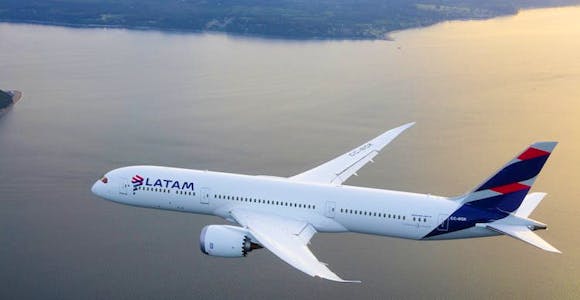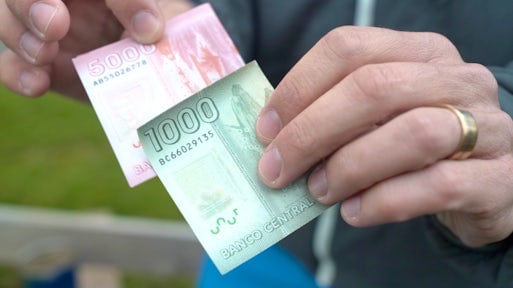Booking flights

Getting to your trip starting location will most likely involve some air travel. Here is our brief guide on flights; including reservations, taxes and baggage.
Discover MoreDeep roots in Patagonia: We are ex-guides, tour leaders, outdoor enthusiasts, & adventurers.
We’ve got our feet on the ground: Impartial advice, a bespoke service, and at no extra cost.
For the ends of the Earth: Sustainability is more than our carbon footprint (but we’re reducing that too).

Ensuring you have the correct currencies when travelling, along with a budget and plan for tipping, is important for your peace of mind. In this guide, we share practical tips and advice on how best to navigate money during your adventure.
Currently, the exchange rate for both Chile and Argentina is roughly $1,000 Chilean pesos to 1 US dollar, and in Argentina, about $1500 pesos to the USD. Things used to be a bit more complicated as there were two different exchange rates - the official rate and the unofficial or “blue dollar” rate - but there is thankfully no longer any significant difference between these rates.
For your trip to Chile/Argentina, we would recommend the following:

Chilean pesos
The official currency of Chile is the Chilean Peso ($). US dollars are rarely used day-to-day when paying for things but are easy to exchange during office hours (9am to 6pm). Some hotels may exchange USD for pesos in an emergency, but we wouldn’t recommend that you rely on it.
Credit and debit cards are widely accepted throughout Chile. You can also easily withdraw cash from an ATM.
Chile does not have a significant black market for foreign currency, so you’ll largely find the same rate being applied throughout the country.
You can see all legal Chilean peso tender notes on the Central Bank of Chile’s official website.

Argentine pesos
The official currency of Argentina is the Argentine Peso ($). However, it's common to use US dollars in tourist areas, and most hotels and restaurants used to dealing with international travellers will accept them.
Foreign currency is not generally accepted or legal tender in the rest of Argentina so carry pesos for paying taxis, museums, supermarkets and so on, or use a credit or debit card.
The largest denomination bill in Argentina is now the 20,000 peso note. You can see all legal Argentine peso tender notes on the Central Bank of Argentina’s official website.
If you would like to understand more about the Argentine economy, both its history and the current situation, we recommend reading this article written by our Product & Partnerships Manager, David (also featured in the video above). David is half Argentine and has spent many years living in and exploring Argentina.


Welcome to El Chaltén
All major towns in Chilean and Argentinian Patagonia have ATMs, but please note that El Calafate and El Chalten are notoriously problematic, so try to plan ahead and withdraw enough cash in Buenos Aires. If you are arriving from Chile, then a good way to get local currency is to pay for your dinner in US dollars, as the change will be given to you in local currency.
Most restaurants in towns accept Visa/Mastercard/Amex, however, please be aware that cards are not usually accepted in more remote parts of Chile and Argentina, so do stock up on local currency before venturing into more remote areas.
Even if you intend to pay by card and withdraw local currency from an ATM, please ensure that you carry some US dollars cash as your backup currency (remember to only take as much as your travel insurance covers you to carry).

We recommend a rough budget of $40-80 USD per person per day for lunch and dinner in Patagonia. This will of course depend on where you choose to eat and drink.
You will likely find prices are similar to those in Europe and the US. Particularly in supermarkets and when eating out.
However, there are some clear exceptions where items may be significantly more expensive than back home - alcoholic beverages in hotels, medication, electronic and imported goods etc. So please be mindful of this.

I underestimated how much cash (US and Pesos) I would need for various tipping because I didn't want to carry too much, but it is wise to think through all of the stages of the trip as to where tipping might come up so you bring enough. Read the full review
Travelled: November 2024
Anthony Bird - Canada
Bring plenty of small bills for tips. Read the full review
Travelled: January 2024
Lynn Beck - USA
We found that 1 and 5$ bills were like gold when tipping drivers and guides. 10 and 20$ also helpful if you're a couple. We didn't use any larger bills than that. We were able to use our credit card for everything except some street vendors in Valparaiso, so, didn't need quite as much cash as we took. Read the full review
Travelled: December 2023
Desiree Kelly - USA
I cannot praise Swoop highly enough. Everyone planning a trip to Patagonia should consider their services!
Travelled: November 2023
Jonathan Earl - UK
Really appreciated the tipping info Swoop recommended. Read the full review
Travelled: October 2023
Tammy Walters - USA
Get all your currency in Buenos Aires. Bring $100 bills for the best rate of exchange.
Travelled: March 2023
Beth Mansfield - USA
I feel like we were very prepared for the experience, culture and currency of Argentina and Chile as a result of the help and education we received from Swoop staff.
Travelled: February 2023
Ken Kerr - USA
Take 15% more cash out than you planned. Tipping guides, drivers and others adds up - we wish we would have had more cash on hand to really express our appreciation to all those that treated us so well! Read the full review
Travelled: December 2021
Jonathan Staker - USA
Learn about the fascinating history & culture from locals
It is customary to leave a tip for guides, drivers and hotel staff in USD at the end of their services, but you may want to carry a few extra pesos for tipping in local establishments such as restaurants and bars.
It is at your discretion whether or not you choose to tip, but we generally suggest the following guidelines:


Getting to your trip starting location will most likely involve some air travel. Here is our brief guide on flights; including reservations, taxes and baggage.
Discover More
To help you to choose places to stay that make sense for your itinerary, budget and preferences, we've created these location-based accommodation guides.
Discover More